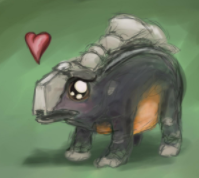The Festival of Rebirth
Eight thousand twenty-three years ago marked the end of the Elemental Incursions and the beginning of a new era in history. In time, the day the Masters of the Elements defeated the last of the elemental lords, Istishia, became the eve of the new year in the global calendar that emerged from this age. Everyone on Arda'aman celebrates the holiday in their own way, but some elements of it are shared across all cultures. The festival (also called the New Year's Fest or the Festival of New Year's Eve) begins some time before New Year's Day in increments of four: in some cultures it is four days, some four weeks, etc*. In the same order they were defeated by the Masters of the Elements, the first increment is dedicated to Kossuth, the Lord of Fire; the next to Akadi, the Queen of Air; the next to Grumbar, the Earthlord; and finally, the last section is devoted to the defeat of Istishia, the King of Water Elementals. The dragonborns of the eastern continent celebrate it in reverse order so that it ends with Kossuth's defeat by their champion, Kestha Kssth, but the vast majority of Arda'amon follows the traditional order. Midnight on the final day marks the beginning of the new year, and with it comes the peak of the festivities. Each culture performs their own, unique ritual that incorporates all four elements, representing the Masters of the Elements coming together to end the Incursions. This can be as simple as a silent, personal prayer to each of the Masters or as elaborate as Azmarin's famed mer-dances and songs, which culminate in the performers and audience releasing paper lanterns into the air over Serenity Cove. Each step of the festivities represents a symbolic cleansing. In the initial years of the festival, when the Incursions were still within living memory, they served to reinforce the elemental lords' banishment, and celebrators would often recite parts of the rituals used by the Masters of the Elements. In time, however, the rituals were lost, the recitations turned into dramatic reenactments, and the Elemental Incursions became a unit in the history books. Now, the cleansing is more symbolic of personal sins and tragedies, of letting go of the old year and embracing the new, than it is of the Elemental Incursions."I say 'no more!' No more shall we cower in fear of every thunderclap; no more shall we be stricken by the sight of the soil we live on; no more shall we look to the sky above us in terror of what it may hold; and no more shall we douse every flame for fear it become an inferno, for we have conquered these forces. From this day forth, let all the peoples of the world be free from this hundred year reign of destruction, and let us take the first step into a new age, one where our children need not fear nature but rather live in harmony with it and all its creations."— Namoros Alenyath, upon defeating Istishia
*One overenthusiastic king of Sylanta began the festivities four months early for the 2000th anniversary of the day. He died shortly after of alcohol poisoning, and such a feat has never been attempted since.
Remove these ads. Join the Worldbuilders Guild










Great article! I love the history behind it :)
I just finished some new art in my latest article: Pinecrest College of Aviation!
Thank you so much!